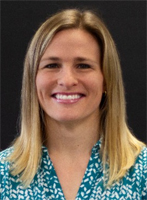What Should You Look For In A CRO Partner?

By Ed Miseta, Chief Editor, Clinical Leader

In May 2022, ISR Reports released the 14th edition of its Phase II/III CRO Benchmarking Report. The landscape for outsourcing clinical research changes every year, and the goal of the report is to help sponsor companies make educated decisions and to help CROs understand how they stack up against competitors when it comes to brand positioning and performance metrics.
I spoke to Rebecca McAvoy, VP of market research at Industry Standard Research, to get some insights into the report and what readers can expect to learn from it.
Ed Miseta: How does ISR collect the data used to prepare this report?

Miseta: What can executives expect to learn from the 2022 Phase 2/3 CRO Benchmarking Report?
McAvoy: Our CRO Benchmarking reports have been designed for two primary audiences. The first is sponsor organizations. The data in this research can help sponsors make more informed CRO selections by understanding how their peers in the industry select CROs and how CROs have performed compared to their customers’ expectations. Sponsors can evaluate potential new providers along the performance metrics that are important to their companies.
The second audience is CROs. Executives at CROs can optimize their operational and marketing strategies by learning their customers’ assessments of their strengths and weaknesses. They will understand what may differentiate their company in the Phase 2/3 market and find areas in which they may need to close the gap relative to competition.
Miseta: 55% of respondents noted having a preferred provider agreement (PPA) in place. What trends have you seen regarding the implementation of these agreements?
McAvoy: These data show big differences in PPA usage based on company size. Company size has a direct relationship with preferred provider agreements, with large sponsors formalizing preferred provider agreements at significantly higher rates than mid-size and small sponsors. Specifically, 84% of respondents from large companies (those spending over $1B in annual R&D) report having PPAs in place for Phase 2/3 work compared to 48% of respondents from mid-size companies (R&D spend $100M-$999M) and 9% of respondents from small companies (R&D spend <$100M).
Miseta: 75% of respondents noted they did not use consultants in the CRO selection process. Are those companies relying entirely on internal expertise to select their outsourcing partners?
McAvoy: Prior experience with a CRO and peer recommendations both play significant roles in how respondents both select providers and learn about new providers. Outsourcers who are not using consultants are likely utilizing a mix of resources to select CROs: prior experience they have had with CROs, colleague or peer feedback about providers with which they’ve had positive experiences, outsourcing department recommendations (particularly at larger organizations), etc.
As a side note, we were curious if sponsor company size impacts the likelihood of using consultants in CRO selection. We analyzed the data to ascertain whether there are differences in the usage rates of consultants by company size but found no statistical differences, meaning sponsors companies of all sizes are utilizing consultants in their CRO selection process at fairly similar rates.
Miseta: Sometimes companies need to choose a CRO that is not on the preferred provider list. What factors do they generally consider when making that selection?
McAvoy: The top selection attributes when looking for a provider that is not on the preferred list are Operational excellence, Therapeutic expertise, Offers innovative solutions, Low cost, and Network of sites/investigators. Operational excellence and Therapeutic expertise are important regardless of whether respondents are choosing among preferred providers, selecting an “off-list” provider, or have no preferred provider list. However, the other attributes of Offers innovative solutions, Low cost, and Network of sites/investigators are uniquely important to selecting providers that are not on respondents’ preferred lists. These attributes seem to point to sponsors looking to providers that are not on their preferred list when they have unique trial needs, such as adhering to a tight budget, finding a niche capability or solution, or gaining access to a specific population.
Miseta: I’m curious if the selection metrics have changed over the years. Were the top metrics from 2022 always the most important selection factors?
McAvoy: That’s a good question and one that we actually did a comprehensive analysis on recently. Looking at the annual data back to 2016, we found that Operational excellence has been chosen as the most important attribute by those outsourcing Phase 2/3 work every year, without exception, while Therapeutic expertise and Prior positive experience with service provider have nearly always been ranked in the second or third positions in terms of importance.
A few recent changes are that the Expectations for data quality attribute has been rising in importance over the last handful of years; it was the fourth most important attribute across decision-making scenarios in 2022. Metrics for meeting overall project timelines made it into the top 5 most important attributes for the first time in 2022, perhaps partly due to the uncertainty and stress around timelines during the COVID-19 pandemic.
Miseta: Your survey looked at some interesting metrics including leadership, preference, and cost perceptions. What did you learn about these metrics and CROs?
McAvoy: The interplay of these areas is something we have been discussing internally here at ISR. The largest six CROs (Covance/Labcorp, ICON, IQVIA, Parexel, PPD, and Syneos) are most likely to be perceived as leaders in the field and to be the providers that respondents would most prefer to work with for Phase 2/3 services if the decision were completely up to them. However, these same six providers are also perceived as the most expensive providers relative to the competition. This tells us that, despite the high cost associated with these providers, these companies have built their brands to the point where outsourcers are still preferring these CROs for their Phase 2/3 studies.
